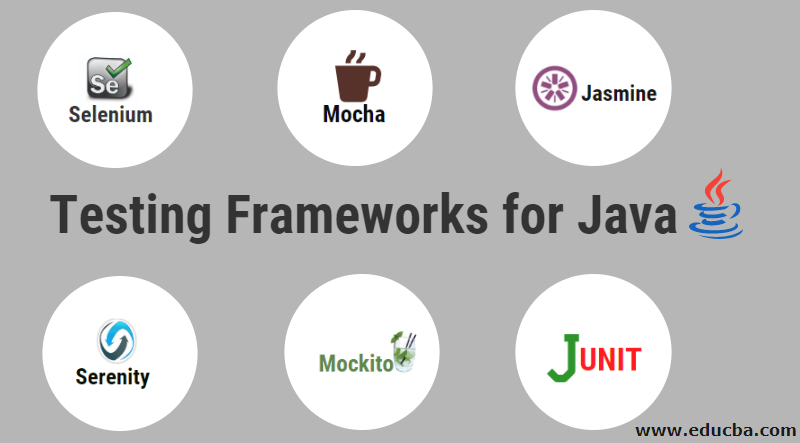Introduction
Most of us strive to be more efficient, focused, and most importantly, productive in testing. And we do everything necessary for this. The best way to show this is to automate repetitive regression tests in order to eliminate the human factor in monotonous work. In turn, we would like to know all the current trends in the world of automation. Only in this way can we be at the top of our profession. And in today’s article, we will talk about what libraries will be popular in 2023 for the most commonly used Java programming language.
Frameworks
One good way to make fewer mistakes is to write less code. And for this we can use various built-in automation tools. In my opinion, 2023 will be dominated by the two biggest frameworks: Maven and Gradle.
Maven is a software project management and understanding tool. It is based on the concept of Project Object Model (POM). Maven can manage dependencies flexibly, namely, download third-party libraries to its local repository, select the desired package version, and handle transitive dependencies. Maven does not depend on the operating system, as it ignores the specifics of working on the platform command line. Plus Maven has several repositories: local, central and remote.
Gradle is an open source build automation tool focused on flexibility and performance using the concepts of Apache Ant and Apache Maven. It allows you to dynamically create tasks, support the software lifecycle, and use code logic to build a project, making it more flexible. Gradle is ideal for supporting multi-project builds, allowing you to define the order in which tasks are executed.
Libraries
Libraries are the most commonly used collections of classes, written by someone else and put together in some common way. Libraries are needed to speed up the development process, they make writing code more concise and understandable. There are many libraries today. In this article, we will look at which of them will be the most popular in 2023.
selenium
One of the most popular Selenium libraries has been in the lead for several years now. The amount of web content is constantly growing, and the easiest way to automate testing is to start with a time-tested library. Therefore, Selenium continues to be the very library that beginners in automated testing can start with. Moreover, many companies widely use Selenium to create their frameworks and test automation products.
Today’s Selenium ecosystem consists of three main parts:
- The first and most important one is Selenium WebDriver which helps to create automated test suites and test suites to scale in various testing environments.
- The second part is the Selenium IDE, which allows simple automated scripts to go through various scenarios in the initial stages.
- The latest is Selenium Grid, a server that allows you to manage tests across multiple environments from one central repository, making it easy to run and maintain.
selenide
Selenide is an intelligent addition to Selenium WebDriver that takes full advantage of it and allows you to minimize the amount of code by reusing repetitive code in separate classes. Additional benefits include Ajax support to stabilize autotests, as well as powerful selectors that allow you to accurately find the desired element even in a very complex project with a branched and dynamically changing DOM (Document Object Model) architecture. In addition, Selenide has a relatively simple configuration, which makes it easier and faster to write automated tests for beginners and professionals.
Selenoid
Selenoid is a server that allows you to run dozens of tests simultaneously in browsers in docker containers. Selenoid has very high performance which is superior to Selenium Grid. Ease of installation and deployment is another benefit of Selenoid. It is also rapidly scaling and updating. By running in docker containers, each browser runs clean and isolated from the main system and consumes no more than 20 megabytes of RAM (RAM) in idle state.
TestNG
TestNG is a testing framework based on JUnit (Java) and NUnit (C#); it has long been popular among Java testers. It will also be in high demand in 2023 due to its use for unit, functional, integration and end-to-end testing. One of the main factors in the continued use of this framework is that many projects have already been written using it. Multiple annotations and the ability to use autotest parameterization make it more flexible and easily adaptable to any tester’s needs.
Cucumber
The next framework that will also be popular in 2023 is Cucumber. Its popularity is due to the fact that the tests are written in a common language that is understandable to autotesters and people far from development and testing, such as analysts and project managers. Cucumber uses a BDD (Behavior-Driven Development) approach; it allows third parties to create their own scripts, which increases the quality and coverage of automated tests.
JUnit
JUnit is designed for unit testing and will be very popular in 2023 due to the growing number of projects based on microservice architecture. The TDD (Test-Driven Development) technique allows it to take a leading position, reducing the risk of errors at a very early stage, when there is no code yet. With the release of the new version of JUnit 5, which introduces parameters and assertions, creating autotests is taken to a whole new level, allowing you to perform tests in cases where it was not possible before.
lombok
The Lombok library reduces the amount of code you write, improving its readability. Adding it to the project is not difficult, and you only need to do it once. Lombok also generates code at the compilation stage, speeding up the process of passing autotests and increasing their stability.
Conclusion
Most of the libraries and frameworks listed in this article will help you stay at the forefront of automated testing and make your daily life easier. They will also determine the point of proximal development in the coming year 2023.







About The Author: Yotec Team
More posts by Yotec Team